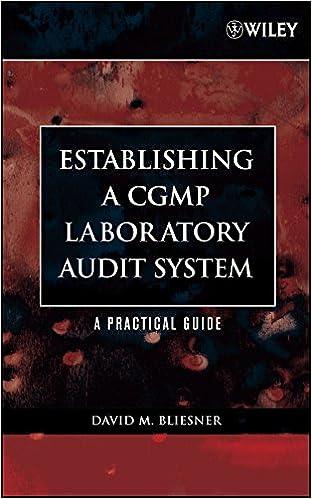Question
Eyepieces Binoculars Camera Lens Sales volume (units) 100,000 40,000 28,000 Selling Price $80.00 $160.00 $196.00 TRACEABLE COSTS Per Unit Direct Costs of Labor & Materials
Eyepieces Binoculars Camera Lens
Sales volume (units) 100,000 40,000 28,000
Selling Price $80.00 $160.00 $196.00
TRACEABLE COSTS
Per Unit Direct Costs of Labor & Materials 39.60 55.00 63.50
Per Unit Variable Costs of Licensing & Patent fees 20.40 40.40 48.50
| OVERHEAD | ? | ? | ? |
| Unit Profit Margin After Deducting Traceable Costs and Overhead |
? |
? |
? |
Labor hours / unit 2 4 5
Omega management realizes that moving to camera lenses is a major shift in their product and market focus. Plus, they know that factory personnel have complained about the increased coordination required for producing camera lenses. Thus, management wants us to conduct a more detailed study of product costs. We collect the following data.
Eyepieces Binoculars Camera Lens
| Sales volume (units) | 100,000 | 40,000 | 28,000 |
| Machine hours | 5,000 | 19,000 | 28,000 |
| # of batches | 20 | 70 | 112 |
| # of Components in each unit of product | 8 | 20 | 40 |
| # of receiving transactions | 1,000 | 1,250 | 3,500 |
| # of inspections | 160 | 400 | 2,240 |
Analyzing the overhead, you discover the following:
| Item | Amount |
| Labor related | $849,720 |
| Machine related | 581,316 |
| Production order costs | 411,248 |
| Other Set Up Costs | 551,252 |
| Parts administration | 286,280 |
| Inventory management | 232,950 |
| Inspection and Quality Control Costs | 187,234 |
|
|
|
| Total | $3,100,000 |
You wonder how best to allocate these costs into cost pools. You settle on forming a total of 6 pools.
Pool 1: Labor related costs. Experience shows that for Omega Optical direct labor hours are what drives these costs and causes them to vary.
Pool 2: Machine related costs. These are driven by machine hours
Pool 3: Cost related to executing a production order (this would include production order costs and other set up costs), allocated using the number of batches.
Pool 4: Related to parts administration, which will be allocated based on the number of components in each product multiplied times the number of units
Pool 5: Costs related to inventory management. These costs are allocated based on the number of receiving transactions.
Pool 6: Costs related to inspections and quality control. These costs would be allocated based on the number of inspections.
A. Summarize the total amounts in each of the six cost pools and then divide by the cost driver activity (from the data we collected) to determine the cost per driver unit for each cost pool.
| Step 1: Total amounts in the 6 cost pools. In some cases you need to add several numbers. In other cases it is just the given number. Labor related costs = Machine related costs = Production order related costs = Parts administration = Total inventory, receiving and shipping = Inspection & Quality Control = |
| Step 2: Total use of the cost driver. You need to combine several numbers in most cases. Labor hours = Machine hours = Number of batches = Parts x Units = Receiving Transactions = Number of inspections = |
| Step 3. Rate per driver unit for Labor related costs (pool 1) divided by = |
| Step 3. Rate per driver unit for Machine related costs (pool 2) divided by = |
| Step 3: Rate per driver unit for Production order related costs (pool 3) divided by = |
| Step 3: Rate per product line for parts administration (pool 4) divided by = |
| Step 3: Rate per driver unit for Inventory, receiving, shipping costs (pool 5) divided by = |
| Step 3: Rate per product line for inspections (pool 6) : = divided by = |
Step by Step Solution
There are 3 Steps involved in it
Step: 1

Get Instant Access to Expert-Tailored Solutions
See step-by-step solutions with expert insights and AI powered tools for academic success
Step: 2

Step: 3

Ace Your Homework with AI
Get the answers you need in no time with our AI-driven, step-by-step assistance
Get Started


